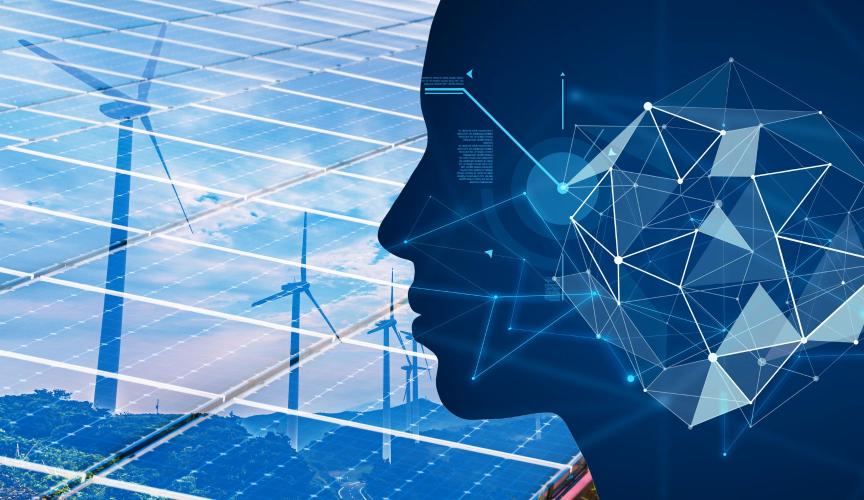
Where do we get our energy when the wind doesn't blow and the sun doesn't shine? This is the key question when considering the reliability of renewables for the power grid. Soon, it may no longer be an issue. AI-enhanced weather forecasting and increasingly effective storage technologies are driving a significant step forward in the energy transition process.
Forecasting and storage, a winning mix
Accurately predicting the most favorable weather conditions for solar and wind energy production, while also being able to store the energy produced in long-duration batteries, will allow the electricity market to make a decisive leap toward environmental and economic sustainability. This was clearly highlighted by Giovan Battista Zorzoli, a veteran in energy studies and one of the most authoritative international experts on renewable energy.
He stated: "The development of artificial intelligence will soon enable us to forecast the weather for the next three days with absolute precision. Combining these two elements will make wind and solar energy schedulable. Their production can be stored for long periods and fed into the grid when needed—not just at night for wind or during the day for solar. Moreover, with AI-powered weather forecasts, electricity markets will be able to accurately anticipate the following day solar energy output in advance. (Link).
Weather forecast: The remarkable achievement of AI
Researchers at DeepMind (Link), Google’s artificial intelligence unit, published an article in Science showcasing the performance of their AI weather forecasting model compared to the European Centre for Medium-Range Weather Forecasts (ECMWF), one of the most reputable institutions worldwide. For at least 90% of the over 1,300 atmospheric variables considered, Google’s model, GraphCast, outperformed ECMWF. What makes this even more remarkable is that DeepMind’s AI model requires significantly less computing power than a research center—just a standard laptop, not a supercomputer, is sufficient.
One specific incident also made waves among professionals. Last September, GraphCast accurately predicted the trajectory of Hurricane Lee, forecasting its arrival at Long Island in the Canadian region of Nova Scotia, far from major cities—a forecast that differed from those made by official weather centers (link).
The strategic role of Long-Duration Energy Storage
Although these models have not yet been scientifically validated, the path seems clear: AI will drive weather forecasts to become more accurate and widely accessible. OpenAI, the creator of ChatGPT, has launched the GPT Store, which offers paid apps based on ChatGPT. These apps don’t require extensive coding experience, allowing a broad range of users to develop new ChatGPT-based applications, some of which will undoubtedly focus on improving weather forecasting. A company, a small municipality, or an energy community will be able to rely on an accurate and low-cost weather forecasting system. This is a crucial point for transitioning to a fully sustainable energy production and consumption system.
Giovan Battista Zorzoli emphasizes this once again: “Thanks to the combined effect of the upcoming availability of long-duration energy storage systems and more reliable weather forecasts, as well as the further development of national and international interconnections, wind and solar production will become effectively schedulable. The distinction between schedulable and non-schedulable renewables will, in fact, be eliminated” (LINK).
MGTES: Zero-impact storage for industrial processes
The MGTES Magaldi Green Thermal Energy Storage technology fits perfectly into this scenario. MGTES addresses the dual need to replace gas for heat production in industrial processes and to overcome the intermittency of renewable energy sources. MGTES stores energy from renewable sources and releases it when needed in the form of heat. MGTES is the world’s first zero-impact storage technology that helps reduce the dependence of energy-intensive industries on fossil fuels. MGTES can be connected to any energy source, utilizing excess renewable energy to generate green industrial heat 24/7 for any application that uses steam within a preferred range of 150-400°C.
In collaboration with Enel X, Magaldi has built the first plant using MGTES technology to supply thermal energy for industrial processes at the IGI plant in Buccino (Salerno, Italy), a company that produces fats and oils for the Ferrero group. The plant will become operational at the beginning of 2025. Once fully operational, the MGTES system will help reduce IGI’s total energy consumption by up to 20%, saving up to 600 tons of CO2 per year by replacing it with renewable energy available around the clock (link).



